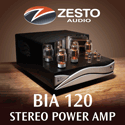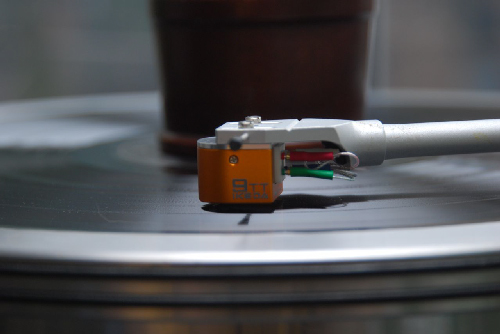|
|
You are reading the older HTML site
Positive Feedback ISSUE 73
ikeda 9TT Moving Coil Cartridge - Returning to the Fold as reviewed by Myles B. Astor
Some mornings I wake up and feel like a real audio old timer and other days I feel like a total noob next to a legend like Isamu Ikeda. Back when Ikeda and his company Fidelity Research were in their heyday, I was truly a high-end audio rookie and sadly never had the opportunity to hear his then revolutionary Fidelity Research FR64 or 66 arms or FR1 or FR-7 moving coil cartridges (although I did actually see his arms and cartridges in the showcase at Electronic Workship located then on 8th St. in the Village!). Years later, though, I did chance to hear the Rowland Complement/Ikeda "cantileverless" moving coil cartridge priced then at a jaw dropping and almost unheard price of $2500. And that listening session with the Complement has left to this day a lasting impression. Despite the cartridge's miniscule 0.17 mV output (limiting its use to but a handful of phono sections or SUTs), the Complement set the standard in its day for low end impact, resolution and transient attack. Over the years I've also wondered—given the tremendous strides made in the design and manufacturing of phono stages, arms and—whether we actually heard all that the Complement (or for that matter any other cartridges of that era) was capable of delivering given it was next to impossible to set-up, vanishingly low output and low compliance. Skip ahead twenty five years or so and Ikeda has once again set up shop and is building what is arguably the best $4000 moving coil cartridge on the market. So good in fact, that the Ikeda 9TT gives the big boys a real run for their money and more than a mouthwatering taste of the state-of-the-art in cartridge design (bear in mind that Ikeda also produces the Kai, his attack on the SOTA). In some ways, the 9TT is an anti-audiophile type of cartridge because you want to play not just one cut from an LP but both sides of an album. Imagine that! Craftsmanship Defined Make no mistake. Ikeda's latest and greatest creation has its stylus firmly planted in the neutral and resolving camp of cartridge design. No, the Ikeda 9TT isn't a forgiving cartridge. No, the 9TT won't sugar coat bad recordings. Nor for that matter should it or any cartridge worth their weight in gold. On the other hand, the 9TT brings to the table an uncanny ability to dig more out of those grooves than many other similarly and higher priced cartridges allowing those cherished recordings with seemingly limitless ceilings to continue to blossom. Out of all the cartridge's attributes, it's perhaps the 9TT's "quietness" and transparency, low level resolution and simply all around effortlessness that sets this cartridge apart from the competition. There's simply less of a sense—much like top cartridges such as the Lyra Atlas and ZYX Universe 2 (and forthcoming Proteus) cartridges—of a stylus (t)racing through the record groove. No doubt part of that quietness is directly traceable to Ikeda's choice of stylus profile. The other piece to the puzzle as Peter Lederman describes it, may be related to how moving coil cartridges handles resonances transmitted up the cantilever to the pivot point (eg. the eerie digital-like quietness of the strain gauge cartridges). That sense of unfettered effortlessness, transient attack and resolution really comes into play on that all-time favorite reference disc Picaflor: Latin American Music for Guitar and Mandolin (Titanic Mn-8). Here, the 9TT really stands out on this Mair-Davis duo championed unique pairing of guitar and mandolin when it comes to contrasting the ringing, bell-like, sharper sound of Davis' mandolin with the softer edged sound of Mair's guitar. There's a uniqueness to each instrument's attack that in particular highlights the mandolin's tremolo or that impression of a sustained note. There's certainly no lack of life or microdynamics and that's coupled with a great sense of radiating guitar and mandolin's radiating body. Tonally, the 9TT lies just slightly to the lean side of neutral but the cartridge doesn't thicken or thin out the midbass to midrange frequencies that would only serve to confuse the two instrument's different tonalities. "The Worried Drummer" from another long time reference disc Mallets, Melody and Mayhem (Columbia CS 8333) is another go to and extremely revealing reference cut. With the Ikeda, there's simply a striking sense of transparency, tightness and speed on this percussion LP without the characteristic etched, hyperdetailed character of older (that may have a function of the arm and its ability to deal with the energy created by the cartridge when tracking the groove as the cartridge back then) or lesser moving coil cartridges. The 9TT easily sails through that especially hard to track triangle retrieving both the instrument's long decay time, shimmer and damping of the ringing. The 9TT also does an admirable job of conveying the shaking of the tambourine's zils or the subtlest, inner details of the shaken sleigh bells. Drums are shockingly dynamic and unconstricted. Where the Ikeda just falls slightly short of the best is in just the slightest loss of impact and tightness in the lower octaves here (after all it's a good Columbia issue but it's still a Columbia pressing in the low end) and pristineness at the far end of dynamic scale. The newest addition to my reference disc list and one that superbly illustrates the 9TT's ability to conquer the upper octaves as well as resolution and transparency is the wonderful Three Blind Mice recording Now (Three Blind Mice TBM-2) featuring the Masura Imada Quartet. This closely miked recording—like most Three Blind Mice releases—really illustrates the 9TT's ability to reproduce the delicacy, lightness and resolution of cymbals, bells, etc. The various percussive instruments on the mind boggling "Alter" track simply hang in space and the 9TT allows their subtle ringing, shaking and resonating to emerge from the grooves. There's seemingly nothing but air between the listener and the instrument. At the other end of the frequency spectrum, plucked double bass strings have a real sense of attack, snap and jump factor. No matter how rapid the playing, there's never a sense of confusion or smearing. Ichiro Mimori's soprano saxophone has a distinctive dissonant and nasal quality without the honkiness and brightness associated with other systems. All the instruments are precisely placed on a simply huge soundstage though the 9TT loses a smidge of the recording's sense of amazing spaciousness. Now the 9TT is really at the top of its game when it comes to that ever-so-critical midrange area—and in particular voices—whether be they of the rock, jazz or classical persuasion. One rock album that I find myself returning to time and time again is the excellent Speakers' Corner reissue of Lou Reed's Transformer (Speakers Corner/LSP-4807). Not only is there an excellent sense of vocal intelligibility and see through quality on "Walk on the Wild Side" but Reed's voice certainly never sounded like that in college even with the use of mood altering substances! The 9TT also exposes like a sore thumb that point in the recording where someone not so elegantly spliced another take into the mix and Reed's voice becomes louder and moves a little closer to the listener. There's also no missing the recordings enormous soundstage; the Thunderthighs appear out of thin air on the extreme outside edges of the stage and slowly creep forward aiding in defining the soundstage's width, depth and height. No, the 9TT doesn't retrieve quite all the reverb enveloping the backup singers. No, images aren't quite as fleshed out as with the best cartridges. No, the 9TT isn't quite as relaxed sounding as say an Atlas or ZYX. But these flaws are in many ways only apparent when side-by-side with the big boys. In other words, you have to really, really know what's on each LP. What really struck me when spinning that stunning recording of Bach's Quodlibet (Telefunken SAWT9457-A) was just how the Ikeda 9TT so clearly and distinctly separated the male and female voices as well as the female voices around a single microphone. Yes, the Atlas has a bit more transparency and sense of space on this recording although the 9TT is certainly no slouch in this department. Or take another great vocal recording such as Ella Sings Jobim (Pablo Today 2630 201). On this $10 Twist and Shout find at last year's RMAF, the 9TT has an uncanny knack to reproduce Ella's voice with a see-thru clarity that many lesser cartridges/systems obscure. Ella's unique phrasing and the intelligibility of her voice come through loud and clear even though the 9TT doesn't quite capture all of the added reverb. "The Girl From Ipanema" give you the big sound, dense orchestration and layering without confusion with Joe Pass's great guitar work really standing out. The Ikeda 9TT also fares extremely well with both small and large scale recordings. One example is the great, Steve Hoffman recommended, small scale jazz recording Bob Cooper Coop (Contemporary/OJC-161). Despite looking far and wide for an original black/gold label of this very early Contemporary jazz recording, I've only been able to put my hands on the OJC reissue (the 1980 version done by Steve Hoffman from the original tapes). Coop, featuring Bob Cooper on tenor sax along with the likes of Mel Lewis on drums, Victor Feldman on vibes and Frank Rosolino on trombone doing West Coast jazz, possesses as do any of the best Contemporary recordings, a simply incredible sense of musicians standing and playing in your room (or the mailroom as it would be!). The 9TT does an excellent job on the "Main Theme" from "Jazz Theme and Four Variations" of rendering the silky smooth tone of Cooper's sax. There's no stress or strain and the sound of Rosolino's trombone comes through clear as day. Yes, you can hear some of the "OJC" coloration—that dryness, loss of space and midrange weight, etc.—but you can also get an excellent sense of believe me, just how great the master tape sounds. Nor does large scale music faze the Ikeda 9TT either. Take for instance, the "Second" or "Third Movements" from the Mercury recording of Fetler's Contrast for Orchestra (Mercury SR90282). There's no sense when coupled with the Doshi phono stage of added stridency, brightness, congestion on dynamic passages like lesser phono cartridges. While the 9TT is a little more exciting and incisive than Atlas, it doesn't match the Lyra's instrumental density, resolution and overall relaxed quality on the Fetler piece. The bass and drums are extremely clean though the 9TT loses just a hint of the little spaciousness present of wonderful Robert Fine reference recording. Finally like Ikeda's other cartridges, the 9TT is definitely no slouch when it comes to low end frequency reproduction and dynamics. Take the Super Analogue repressing of Gary Karr's Religious Songs and Hymns (Super Analogue KIJC 9244). While the Ikeda doesn't quite grip the road like its bigger moving coil brethren, this record serves quite nicely to illustrate the depths to which the Ikeda can plunge on the organ. On another longtime reference Jonas Hellborg's Elegant Punk (Day Eight Music), the 9TT really shines when it comes to capturing the attack and dynamics of his electric bass guitar. And where the 9TT really stands out on Hellborg's rendition of Hendrix's "Little Wing" is simply the cartridge's ability to extract low level resolution and subtlest, softest nuances of the music. The Touch is Still There! It's clear that Ikeda-son's latest that he hasn't lost his magical touch. His latest creation, the 9TT moving coil cartridge, is a very linear, resolving and truthful sounding transducer and was a pleasure to listen to in my system. The Ikeda 9TT is clearly one of the top performers in its price range and given the proper ancillaries eg. arm and phono section, is a serious contender for anyone shopping for a moving coil cartridge. Where the 9TT errs is mainly on the side of omission such as just a little less ambience retrieval, three dimensionality and resolution when compared side-by-side with the big boys. And given just how good the Ikeda 9TT is, one is left wondering how his all-out, no holds barred effort, The Kai, sounds! Technical Highlights Isamu Ikeda is hardly a Johnny-come-lately to the high-end audio business. In fact, Ikeda is revered in Japan as the father of the moving coil cartridge; practically every one of the greatest Japanese cartridge-makers has at some time in their career apprenticed under him. Ikeda's more "modern" accomplishments include the introduction (now nearly 50 years ago) of the Fidelity Research FR-1 moving coil cartridge noted for its use of pure silver wire, a lightweight styli, yoke construction air-core coils, higher efficiency magnets (that allowed for coils with fewer windings) and an almost unheard of at that time line contact stylus. Ikeda followed up on the commercial success of the FR-1 with the release in 1978 of the FR-7 moving coil cartridge and its then revolutionary "empty core," four-pole structure. After Fidelity Research closed its doors in 1985, Ikeda didn't miss a beat and immediately formed Ikeda Sound laboratories. The fledgling companies' first transducer release was the Series 9 cartridge line utilizing the same empty core technology developed for the Fidelity Research FR-7 MC cartridge along with the brand new "cantileverless" design. Ikeda's latest designs such as the 9TT are no longer cantileverless. He abandoned this design concept in large part because of the cantileverless cartridges' sensitivity to dust, geometry, dialing in and antiskate issues. And thank goodness. His cantileverless designs were an absolute nightmare to align; only the Graham arm of the day with its patented cartridge alignment jig gave any sort of confidence in set-up and alignment. Believe it or not, I actually witnessed Bob Graham mounting and aligning the Rowland Complement in an early production version of his arm in only five minutes. But that was the exception, not the rule. That aside, the latest generation of Ikeda cartridges is designed to pay homage to that earlier Ikeda magic yet be more forgiving of the aforementioned issues. At the heart of the new Ikeda 9TT cartridge is a permalloy core, neodymium magnet and ideally shaped magnet yoke and low impedance coils. The cantilever is fashioned from double layered duralmin pipe and topped off with a solid line contact diamond. Still, the Ikeda 9TT isn't, because of its rounded shape and rather large body, the easiest cartridge in the world to set up. Mounting and alignment in the VPI 10.5 Classic arm definitely required both a good set of eyes and a steady hand. Not to mention two things other than alignment may prove problematic for potential buyers at this price range. First, the cartridge's extremely low 0.16 mV output necessitates the use of a very quiet phono stage or step up transformer. Two, the 9TT sports a very low compliance requires the use of a high mass arm though the cartridge performed very well in the VPI 10.5i tonearm. When it came to loading, the 9TT seemed using the Doshi Phono section quite happy seeing at 100 ohms. Myles B. Astor
Ikeda 9TT Moving Coil Cartridge Specifications: Output 0.16 mV. VTF: 1.8 ± 0.2 gms; Compliance = 7; Weight = 10 gms; Frequency response: 10-45 kHz. Coil impedance: 2 ohms.
Bill Demars, U.S.
Importer
|









